Mt. Fuji, Japan’s tallest and most iconic mountain, draws thousands of climbers each year. Among the various routes, the Yoshida Trail stands out for its accessibility, scenic beauty, and historical significance. This article will guide you through everything you need to know about climbing the Yoshida Trail, from how to get there to what to expect on your journey.
Getting There
The Yoshida Trail begins at the 5th Station, which is accessible by bus from various locations. Most climbers start their journey from Tokyo or nearby cities.
From Tokyo:
- By Train and Bus: Take the JR Chuo Line from Shinjuku Station to Otsuki Station. Transfer to the Fujikyu Railway to Kawaguchiko Station. From there, buses run regularly to the 5th Station.
- By Bus: Direct buses from Shinjuku Bus Terminal to the 5th Station are available during the climbing season. This option is convenient and straightforward, taking around 2.5 hours.
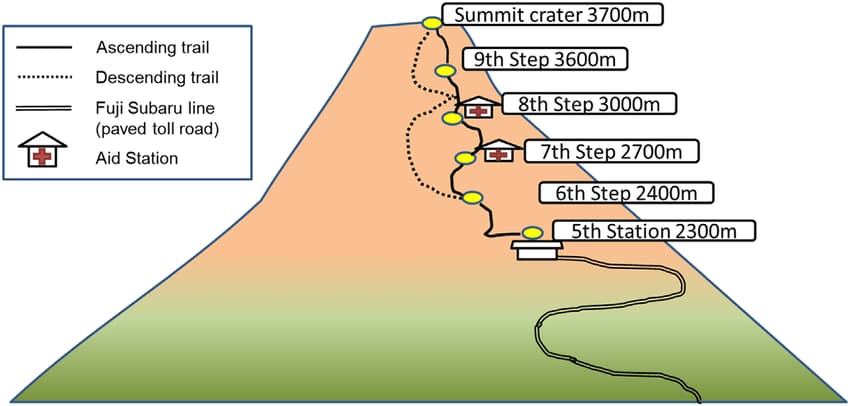
Trail Overview
The Yoshida Trail is popular due to its well-maintained path and numerous facilities. It is divided into ten stations, with the 5th Station being the starting point for most climbers.
Key Points on the Trail:
- 5th Station (2,305 meters): The starting point, equipped with shops, restaurants, and rest areas. This is where climbers acclimate and prepare for the ascent.
- 6th Station (2,390 meters): The trail gradually ascends from here, offering views of the surrounding forests.
- 7th Station (2,700 meters): A steeper climb begins here, with mountain huts providing rest and meals.
- 8th Station (3,360 meters): The final push to the summit starts here. The trail becomes rocky and challenging.
- Summit (3,776 meters): Reaching the summit rewards climbers with breathtaking views and the opportunity to visit the crater and the famous Kusushi Shrine.
Download the Yoshida Trail Map in pdf format from Fuji Mountain Guides.
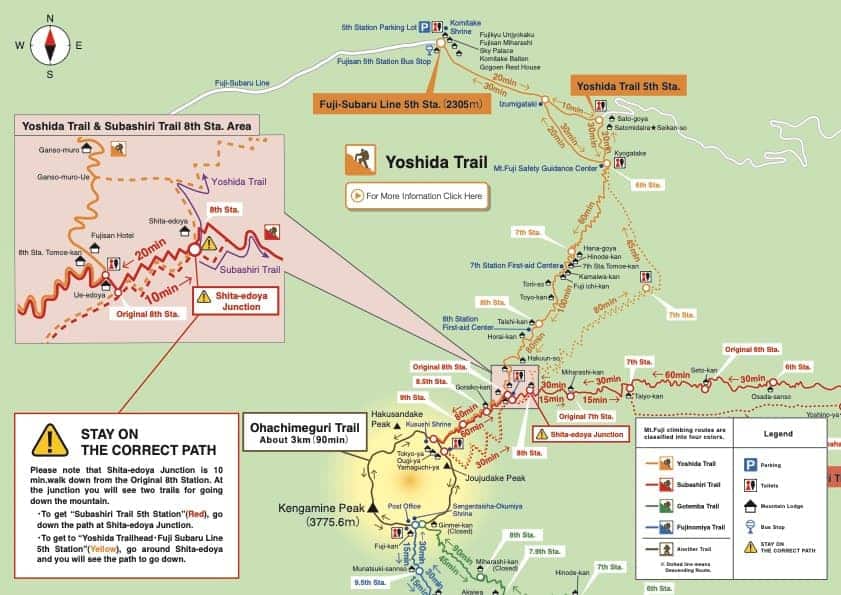
Historical Significance
The Yoshida Trail has a rich history, deeply intertwined with Japanese culture and spirituality. Traditionally, pilgrims used this route to ascend Mt. Fuji as a form of worship. The trail has been used for centuries, with numerous shrines and historical sites dotting the path. The Kusushi Shrine at the summit is a testament to the mountain’s spiritual significance.
What to See
Sunrise (Goraiko)
One of the most magical experiences is witnessing the sunrise from the summit. Known as Goraiko, this spectacle attracts many climbers who start their ascent at night to reach the summit by dawn.
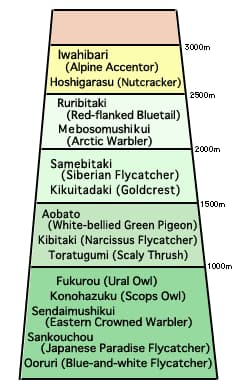
Flora and Fauna
The trail offers diverse ecosystems, from lush forests at lower elevations to volcanic landscapes near the summit. Look out for unique plants and animals adapted to the mountain’s harsh conditions.
Historical Sites
Along the trail, you will find various shrines and markers that provide insight into the historical and cultural importance of Mt. Fuji. These sites add a layer of depth to the climbing experience.
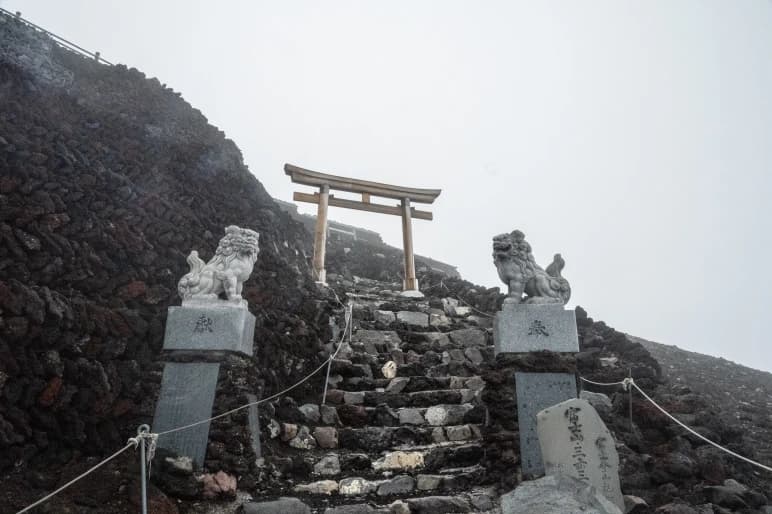
1. Kusushi Shrine (Kusushi Jinja)
Located at the summit of Mt. Fuji, Kusushi Shrine is one of the most important Shinto shrines on the mountain. It is dedicated to the deity Sengen-Sama, believed to protect climbers and ensure their safe journey. Pilgrims have visited this shrine for centuries, seeking blessings and protection.
2. Torii Gates
As you ascend the Yoshida Trail, you’ll pass through several Torii gates. These traditional Japanese gates mark the entrance to sacred spaces and signify the transition from the mundane to the sacred. The Torii gates on Mt. Fuji represent the spiritual journey climbers undertake.
3. Historical Markers
Various markers along the trail commemorate significant historical events and notable climbers. These markers often include inscriptions and plaques that provide insights into the history of the Yoshida Trail and its importance to Japanese culture.
4. Old Mountain Huts
Some of the mountain huts along the Yoshida Trail have historical significance, having provided shelter to climbers for many decades. These huts are part of the mountain’s climbing heritage and reflect the traditional architecture and hospitality of the region.
5. Yoshida Trailhead Shrine
At the beginning of the trail, you will find a small shrine where climbers traditionally pray for a safe ascent. This shrine serves as a starting point for many climbers, symbolizing the spiritual preparation for the journey ahead.
6. Sengen Shrine (Fuji Sengen Jinja)
Although not directly on the trail, the Sengen Shrine at the base of Mt. Fuji is historically linked to the Yoshida Trail. It is one of the starting points for traditional pilgrimages up the mountain and holds significant cultural importance.
These sites enhance the climbing experience by connecting modern climbers with the rich history and spiritual traditions associated with Mt. Fuji.
Preparing for the Climb
Physical Preparation: Climbing Mt. Fuji is challenging and requires a good level of fitness. Engage in regular cardiovascular and strength training exercises in the months leading up to your climb.
Acclimatization: Spend some time at the 5th Station to acclimate to the altitude. This can help reduce the risk of altitude sickness.
Gear and Clothing:
- Hiking Boots: Sturdy and comfortable boots are essential.
- Layers: The weather can change rapidly, so wear layers to adjust to varying temperatures.
- Headlamp: Necessary for night climbs.
- Snacks and Water: High-energy snacks and plenty of water are crucial.
- Rain Gear: Weather conditions can be unpredictable, so pack waterproof clothing.
Climbing Tips
Start Early: Begin your climb early to avoid crowds and have ample time for rest breaks.
Pace Yourself: Climbing Mt. Fuji is a marathon, not a sprint. Take your time and enjoy the journey.
Stay Hydrated: Drink plenty of water to stay hydrated, especially at higher altitudes.
Use Mountain Huts: Book a stay in one of the mountain huts to rest and acclimate. This also provides a chance to experience Japanese hospitality on the mountain.
Make sure to read 10 Things to Know Before Climbing Mt. Fuji.
Where to Stay
For those interested in staying at a mountain hut before making a sunrise ascent, it is highly recommended to make a reservation before heading to the mountain. Here are some options:
Mountain Huts on the Trail
- Goraikokan: Located between the 8th and 9th stations at roughly 3,450 meters above sea level. This hut provides basic sleeping facilities, including a blanket and pillow in a communal space. Prices start at 11,000 yen.
- Taishikan: Situated at the 8th Station, 3,100 meters above sea level and about two and a half hours from the summit. Each person gets a premium sleeping bag and a designated space. Prices start at 10,000 yen for one night with two meals.
- Kamaiwakan: Found at the 7th Station, 2,790 meters above sea level and only a couple of hours from the Yoshida 5th Station. Prices start at 10,000 yen for a weekday space with a meal. Sleeping bags and pads are provided in a bunk-bed dormitory or a private or single room.
To view availability and book your Mt Fuji hut visit Japan Mountain Huts.
Accommodations in Kawaguchiko
Many climbers stay in the town of Kawaguchiko before and after their climb. The town offers a range of accommodations from budget hostels to luxury hotels. Staying here allows you to rest and prepare before heading to the 5th Station. Some popular options include:
- K’s House Fuji View: A popular hostel with stunning views of Mt. Fuji.
- Hotel Mifujien: Offers traditional Japanese rooms with an onsen (hot spring).
Environmental Responsibility
Mt. Fuji is a UNESCO World Cultural Heritage site, and preserving its environment is crucial. Follow the principle of “leave no trace”:
- Carry Out All Trash: Bring back all your waste, including food wrappers and bottles.
- Stay on Designated Paths: This helps protect the fragile environment and ensures safety.
- Respect Wildlife: Do not disturb the plants and animals you encounter.
The Adventure of The Yoshida Trail
Climbing the Yoshida Trail on Mt. Fuji is a rewarding adventure that combines physical challenge, natural beauty, and cultural heritage. By preparing adequately and respecting the mountain, you can ensure a safe and memorable experience. Whether you are an avid climber or a casual adventurer, the Yoshida Trail offers an unforgettable journey to the summit of Japan’s most iconic peak.
For further research visit the Official Website for Mt Fuji Climbing. Also ensure you read the New Climbing Rules for Mt. Fuji in 2024.
Read more:
- 10 Amazing Facts About Mount Fuji
- Why is Mt Fuji called Fujisan?
- 5 Best Places to See Mount Fuji: A Guide to Japan’s Majestic Peak
- 9 Reasons for the Importance of Mount Fuji in Japanese Culture
- Introducing Two New Contemporary Mount Fuji Art Prints
Can’t travel to Mt Fuji? Bring the spirit of Mt Fuji into your home with original art by The Art of Zen.

At the Art of Zen we have a selection of original Japanese style art prints in the ukiyo-e and Japandi style. Some of our best selling work is Mount Fuji wall art and Japandi wall art.
Add some zen to your space with art from the Art of Zen shop.
Featured image at top of Mount Fuji Climbers on the Yoshida Trial – image by Mainichi – Kota Yoshida.

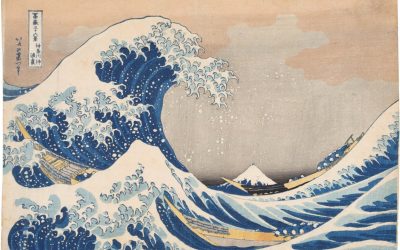
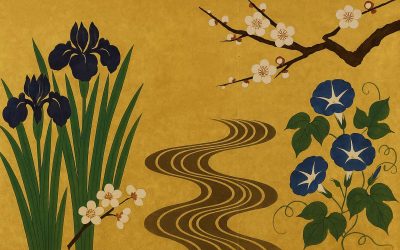

0 Comments